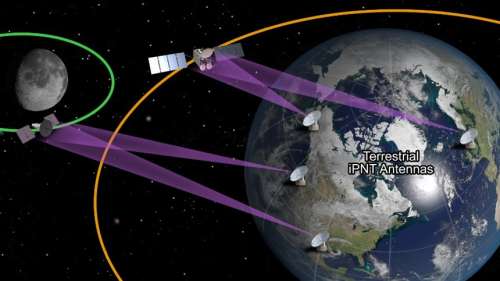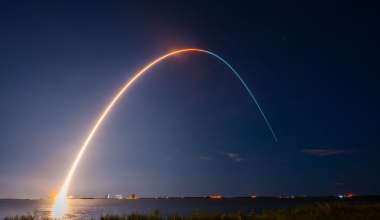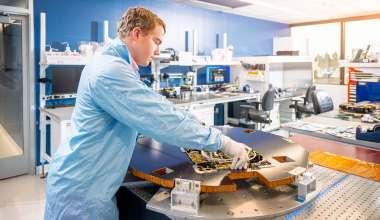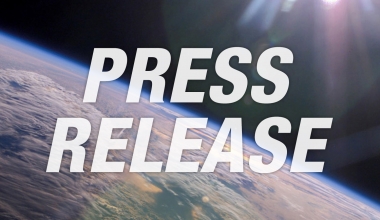The Aerospace Corporation and NASA have demonstrated a groundbreaking framework for autonomous navigation in cislunar space through modeling, simulation, and laboratory prototypes. This accomplishment lays the groundwork for new opportunities for operational missions in the emerging and strategic region between Earth and the Moon, known as cislunar space. This collaboration between Aerospace and NASA path-finds the way for future exploration and utilization in this increasingly contested domain.
Aerospace combined its inverted Positioning, Navigation, and Timing (iPNT) technology with NASA’s Goddard Enhanced Onboard Navigation System (GEONS) to create a simple, low-cost autonomous navigation solution for the challenging cislunar environment.
“These technologies illustrate Aerospace's commitment to prototyping and advancing the art of the possible with benefits to commercial entities through technology transfer and licensing,” said Andre Doumitt, Aerospace’s director of Emerging Programs. “The success of this collaboration underscores the excitement and potential within the cislunar domain for both civilian and government missions.”
Revolutionizing Cislunar Navigation with iPNT

Aerospace's iPNT approach revolutionizes traditional navigation methods by sending one-way signals from ground stations to space. Any number of satellites can use these iPNT signals to navigate autonomously. This method compensates for the weak GPS signals near the Moon, providing strong and reliable navigation capabilities in cislunar space that are akin to GPS on Earth. NASA’s GEONS flight software was integrated in a laboratory prototype that successfully demonstrated iPNT through hardware-in-the-loop simulations that are representative of flight operations. GEONS provided a real-time navigation solution for spacecraft position, velocity, and time by processing one-way pseudo-range and Doppler measurements derived from the simulated iPNT signals. GEONS has over two decades of flight heritage, and it is currently flying on the Magnetospheric Multiscale (MMS) mission. For a detailed description of the capabilities of GEONS, click here.
“Autonomous navigation technologies like GEONS reduce mission operation costs, alleviate demand on ground-based resources, and increase scientific returns,” said Dr. Nathan Stacey, NASA’s GEONS product development lead. “The integration and testing of GEONS in iPNT further matures GEONS.”
As activities in cislunar space expand, advanced PNT solutions like iPNT and GEONS will be key to mission success for scientific research, resource exploration, and national security.
“Spacecraft navigation in cislunar space is essential for space domain awareness, scientific exploration, and commercial activities,” said Dr. Roberta Ewart, chief technology officer, Space Systems Command. “Our collaboration with Aerospace enhances these capabilities and supports future mission success.”
This collaboration, supported by the U.S. Space Force’s Space Futures Command and Space Systems Command, enhances both systems' capabilities and sets the stage for wider adoption. Both iPNT and GEONS are available for commercial licensing, offering exciting opportunities for operators in the cislunar domain.
Operators interested in leveraging iPNT should contact Aerospace’s Office of Technology Transfer: technologytransfer@aero.org.
For GEONS access, contact Dr. Nathan Stacey at nathan.i.stacey@nasa.gov.








